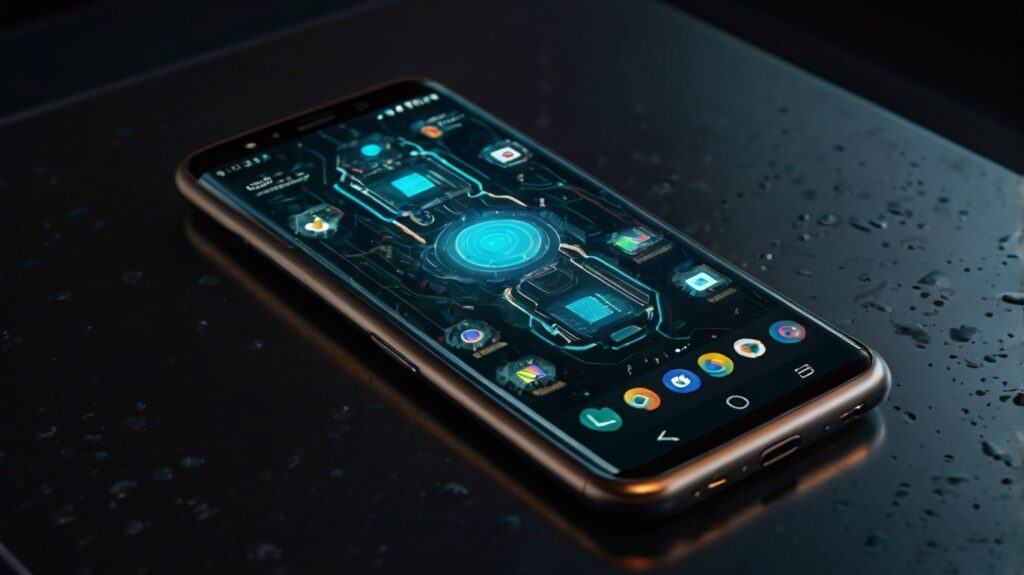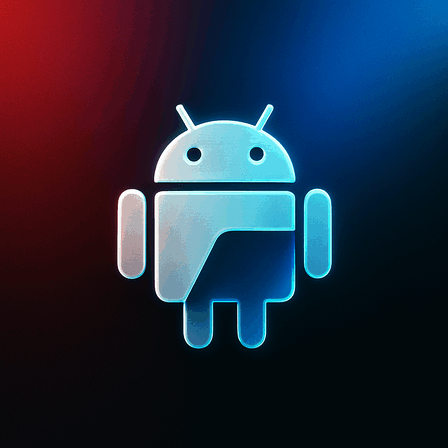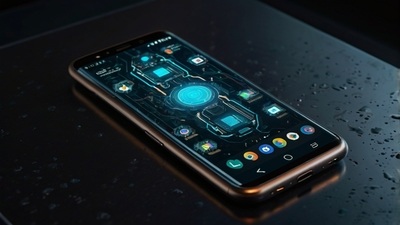
How To Improve Android Battery Life
Master Your Android’s Battery: The Ultimate Guide to Extended Life and Performance
In our fast-paced digital world, a dying phone battery is more than an inconvenience; it’s a roadblock. Your Android smartphone is a powerful tool, but its utility often feels tethered to the nearest charger. What if you could unlock hours of extra usage, confidently navigating your day without the constant fear of your screen going dark?
This comprehensive guide is designed to empower you with actionable strategies to significantly improve your Android’s battery life. From simple setting adjustments to advanced optimization techniques, we’ll delve into the secrets of keeping your device running longer and more efficiently. Get ready to reclaim your freedom from the charging cable and maximize your mobile experience.
Understanding the Android Battery Landscape: Why Does It Drain So Fast?
Before diving into solutions, it’s crucial to understand the common culprits behind rapid battery drain. Modern Android devices boast stunning displays, powerful processors, and a multitude of connectivity options, all of which consume significant power. Apps constantly running in the background, bright screens, active location services, and even suboptimal charging habits can silently chip away at your battery’s endurance. Identifying these power-hungry activities is the first step toward effective optimization.
Immediate Impact: Essential Settings to Tweak Right Now
Many battery-saving improvements can be made with a few quick adjustments in your phone’s settings. These initial steps offer an immediate boost to your device’s longevity.
1. Harness the Power of Dark Mode
If your Android phone features an OLED screen (common in many modern devices), switching to dark mode can dramatically reduce power consumption. OLED displays illuminate individual pixels, and black pixels are essentially turned off, consuming no power.
- How to: Go to Settings > Display and toggle Dark theme or Dark mode on. Extend this to apps that offer a dark theme option for maximum benefit.
2. Optimize Screen Brightness and Timeout
Your screen is often the biggest battery hog. Reducing its brightness and setting a shorter screen timeout can save significant power.
- Lower Brightness: Manually adjust your screen brightness to a comfortable, lower level. You can typically do this from the quick settings panel (pull down from the top of the screen) or in Settings > Display.
- Disable Adaptive Brightness (Sometimes): While adaptive brightness adjusts to ambient light, it can sometimes set the screen brighter than necessary. Experiment with disabling Adaptive brightness in Settings > Display and see if manual control works better for you.
- Shorten Screen Timeout: Set your screen to turn off after a shorter period of inactivity. We recommend 30 seconds to 1 minute.
- How to: Navigate to Settings > Display > Screen timeout and select a shorter duration (asurion.com).
3. Activate Power Saving Modes
Android devices come equipped with various power-saving features designed to conserve energy when you need it most.
- Battery Saver/Power Saving Mode: This limits visual effects, background activity, and can turn on dark mode.
- How to: Find this in Settings > Battery > Battery Saver or Power saving (pcmag.com).
- Adaptive Battery: This intelligent feature optimizes how apps use your battery in the background. Ensure it’s enabled.
- How to: Check Settings > Battery > Adaptive preferences and make sure Adaptive battery is toggled on (zdnet.com).
- Extreme Battery Saver: For dire situations, this mode pauses non-essential apps and notifications, letting you choose which critical apps can still function (pcmag.com).
Smart Connectivity Management: Disconnect to Conserve
Wireless features, while essential, are constant drains on your battery. Managing them smartly can yield significant power savings.
1. Turn Off Unused Connectivity Features
Wi-Fi, Bluetooth, GPS, and mobile data continuously search for signals, consuming power.
- How to: Disable these features from your quick settings panel or Settings when you’re not actively using them (android.com).
- Location Services: Grant location access only to apps that genuinely need it, and consider turning off Wi-Fi and Bluetooth scanning in Developer Options, which are often used for location accuracy (hmd.com) (youtube.com).
2. Utilize Airplane Mode
If you’re in an area with poor network coverage, your phone works harder to find a signal, draining battery faster.
- How to: Enable Airplane mode from your quick settings or Settings to prevent constant searching (android.com). This is also useful when you don’t need network access, like overnight.
3. Switch 5G to 4G (Pixel Phones)
5G connectivity, while fast, can sometimes consume more battery. If you have a Pixel phone, consider switching to 4G if 5G coverage is inconsistent or not critical for your current tasks (android.com).
App Optimization: Taming the Background Beasts
Apps are often the biggest hidden battery consumers, especially those running processes in the background.
1. Close Background Apps
Many apps continue to run in the background, consuming resources even when you’re not actively using them.
- How to: Regularly clear recent apps or restrict their background activity through Settings > Battery > Background usage limits and enable Put unused apps to sleep or Put apps to deep sleep (samsung.com).
2. Restrict Battery-Hungry Apps
Identify which apps are consuming the most battery and manage their permissions and background activity.
- How to: Check Settings > Battery to see a breakdown of app battery usage. For problematic apps, you can manually select them and choose to “Limit usage” or “Put to sleep” (samsung.com).
3. Update Apps Regularly
Developers frequently release updates that improve app efficiency and reduce battery usage. Keeping your apps updated ensures you benefit from these optimizations (android.com).
4. Manage Background Tasks with JobScheduler/WorkManager
For developers, deferring non-urgent tasks using Android’s JobScheduler or WorkManager APIs can intelligently schedule work for optimal battery conditions, avoiding unnecessary timers and alarms (medium.com).
Charging Habits and Battery Health: Long-Term Longevity
Beyond daily optimizations, how you charge and care for your battery impacts its overall lifespan.
1. Charge Wisely: Avoid Overcharging and Extreme Discharge
Batteries have a finite number of charge cycles. Avoiding extreme charging habits can prolong their life.
- Avoid 0% to 100%: Ideally, keep your battery level between 20% and 80% to minimize stress on the battery (android.com).
- Don’t Overcharge: Unplug your device once it reaches 80-90% (android.com).
- Use Original Chargers: Always use the original charger and cable that came with your smartphone to ensure compatibility and prevent battery damage (support.google.com).
2. Calibrate Your Battery (When Needed)
Sometimes your phone’s operating system might inaccurately report the battery level. Calibrating it can reset this.
- How to: Charge to 100%, leave it plugged in for an hour or two, then use it until it dies and turns off. Charge it back to 100% without interruption (support.google.com).
3. Avoid Extreme Temperatures
High heat or extreme cold can degrade battery performance and lifespan.
- How to: Keep your phone out of direct sunlight and avoid leaving it in hot cars or very cold environments (support.google.com).
Advanced Tips for the Power User
For those who want to go the extra mile, these tips offer further optimization.
1. Turn Off “Hey Google” or “OK Google” Detection
Your phone constantly listens for these wake words, consuming battery in the background.
- How to: In Google Assistant settings, disable “Hey Google” detection if you rarely use it (youtube.com).
2. Optimize Always-On Display (AOD)
If you use AOD, choose the “tap to show” option instead of always-on to save battery (youtube.com).
3. Limit Background Processes (Developer Options)
For advanced users, enable Developer Options (Settings > About phone > Tap Build number 7 times) and then set a limit on background processes.
- How to: In Developer Options, find Background process limit and choose a lower number like “At most 3 processes” or “At most 4 processes” (youtube.com).
4. Disable Absolute Volume for Bluetooth Devices (Developer Options)
This can give finer control over audio levels and potentially save battery by preventing your phone from synchronizing volume with Bluetooth devices (youtube.com).
The Role of Software Updates
Keeping your Android operating system and apps updated is crucial. Updates often include bug fixes and efficiency improvements that can directly impact battery performance.
- How to: Check for system updates in Settings > System > System update (android.com).
Integrating Affiliate Marketing into Your Online Presence
As you build valuable content around topics like improving Android battery life, consider how you can monetize your expertise. Affiliate marketing offers an excellent avenue for this. It involves promoting products or services and earning a commission for sales or leads generated through your unique affiliate links (shopify.com). For instance, you could recommend specific power banks, efficient charging cables, or even apps designed for battery optimization.
Platforms like Wealthy Affiliate provide comprehensive training, tools, and a supportive community for individuals looking to succeed in affiliate marketing (funnelscene.com). They offer resources for everything from building a website to keyword research and coaching, helping beginners become profitable affiliate marketers (dreamgrow.com). If you’re ready to explore how to turn your passion for technology into a sustainable online business, learning the ropes of affiliate marketing can be a game-changer. For those interested in delving deeper into how to effectively build and grow an online business through affiliate marketing, you can learn more about the tools and training available at Wealthy Affiliate (wealthyaffiliate.com).
Conclusion: Empowering Your Android Experience
By implementing these strategies, you’re not just saving battery life; you’re taking control of your Android experience. From simple tweaks like adjusting screen brightness and enabling dark mode to more advanced techniques like managing background app activity and optimizing charging habits, each step contributes to a more efficient and longer-lasting device. Embrace these practices, and enjoy the freedom of an Android phone that keeps up with your demanding day.

